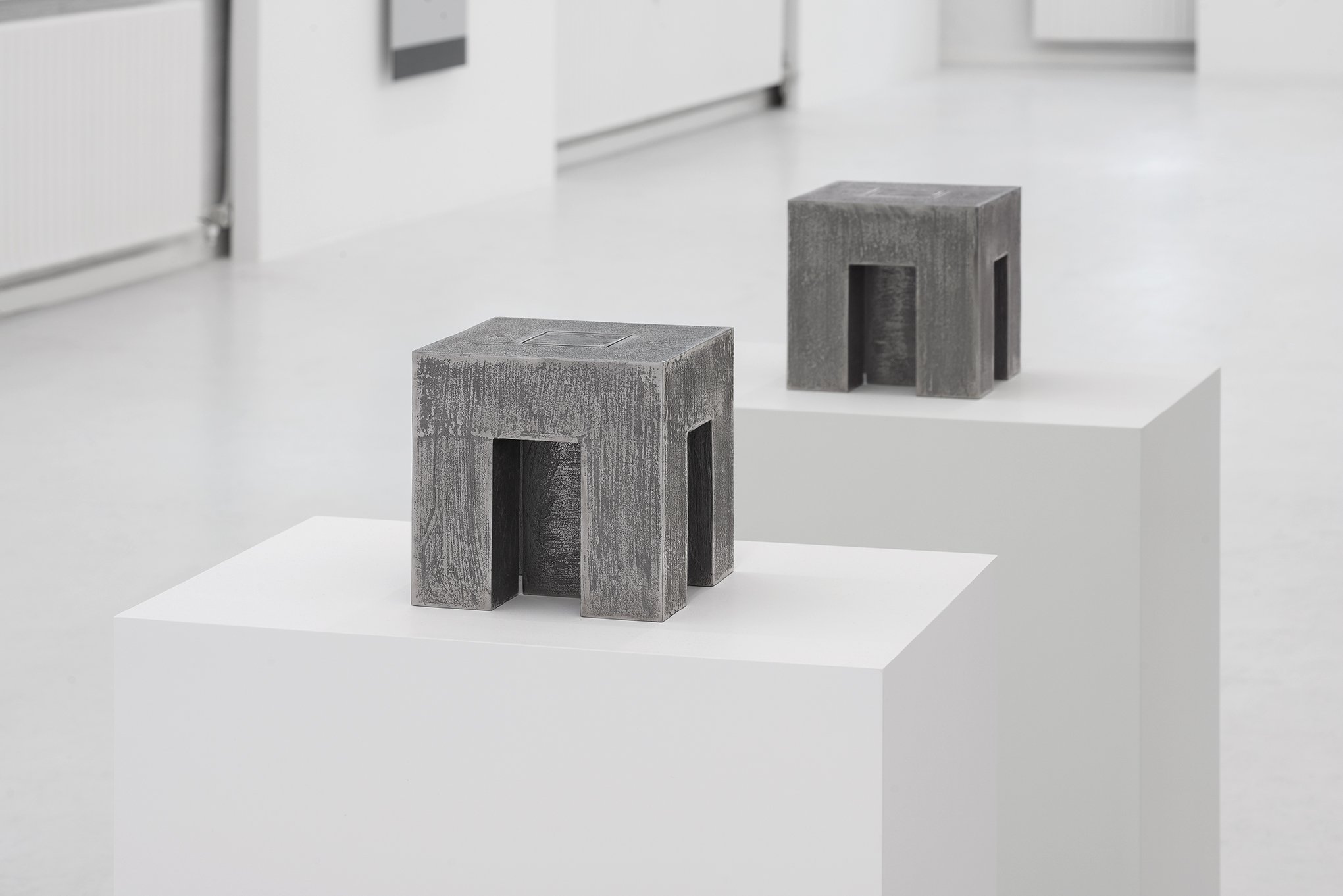Frank Gerritz
14 August - 12 September 2020
The geometric appearance of Frank Gerritz’s oeuvre, empathic and abstract, is based on formal and chromatic rules so strict that they can lead us to link them with those of the generation that introduced industrial style modules and flat surfaces. But the work of Frank Gerritz (Hamburg, 1964) has nothing to do with minimalist explorations. Intellectual ones, yes, but only the beginning of the humanist philosophy that becomes apparent in the warmth of the most basic human gesture, that drawing, the expanded notion of which we will delve into further bellow.
Gerritz’s first drawings and sculptures already displayed this compendium of compositional variables that includes his works on paper as well as his “drawn sculptures”. Meticulous, he stores his early sketches in a large chest of drawers in his Hamburg studio, documenting the beginning of his significant career as a contemporary artist. They not only prove how much he has yet to do, but how compact his artistic project has been since his successful international start, when he premiered his first solo exhibition Sculpture Installation with renowned Stark Gallery in New York in 1991 only to show his celebrated Column Drawing at the same gallery a year later, affirming his stature as an emerging artist and showing alongside Sol Lewitt at Boston’s Arthur Sackler Museum that year also.
Since then, the application of thousands of layers of graphite such as those that “drew” the black mineral coating on that column, occupy new site-specific installations and is a recourse used in all of his work on aluminium or MDF, veritable screens of light which upon which our movements are reflected. “That’s what part of my work is about, showing light in the darkness,” Gerritz asserts. And this is confirmed when we stand before pieces as emblematic as those making up the Seraphic Light series from 1996/97 or The Darksides, from 2007, and which installations like Time Code at the Hamburger Kunsthalle in 2011 were organized around. This accumulation of millimetrically applied horizontal or vertical strokes traces areas of incredible and distinct luminosity… Since Gerritz says, “they’re made to be looked into”, to observe the inflections of natural or cements or proportions, that since the start of his career conformed to the measure of his own body, some 180 cm high and equal breadth, sometimes expanded or decreased, as exemplified by Definition of Space I Focused Light, from 2016, or the beautiful installation Breeze of Light at Munich’s Nusser&Baumgart Gallery in 2011.
Occupying a space with precision, thus inciting time, is also an essential aspect of Gerritz’s work in the sphere of drawing, as shown in Night Walker (For Vincent Peirani) from 2019, or the Gemini Suite from 1993, a kind of bible of line and volume drawn with graphite on paper and whose principles we discover in much of his most recent work. Including the title work of this exhibition Mulholland Drive from 2016-18 where Gerritz architects a voluminous and masterful paintstick on anodized aluminium work. The application of the logic of occupying and vacating space (that we see already in those drawing from more than two decades ago) requires a scrupulous rigor that reminds me of another of Gerritz’s affirmations: “My work is not about perfection, but about precision.”
The works of Frank Gerritz are internationally collected throughout the globe by substantial private as well as museum collections. Having been placed in marked defining collections such as Collezione Panza di Biumo, Varese, Italy, Collection Wynn Kramarsky, New York, NY, USA and The Menil Collection, Houston, TX, USA from very early in his career Frank Gerritz proved himself a benchmark artists of his present which also has resulted in his works being in the permanent collection of a vast number of renowned museums around the world among them The National Gallery of Art, Washington, USA, Weserburg, Museum für Moderne Kunst, Bremen, Germany, Fogg Museum (Harvard Art Museum), Cambridge. MA, USA, Yale University Art Gallery, New Haven, CT, USA, Seattle Art Museum, WA, USA, Brooklyn Museum, New York, NY, USA and Lafrenz Collection Hamburger Kunsthalle, Germany.



















